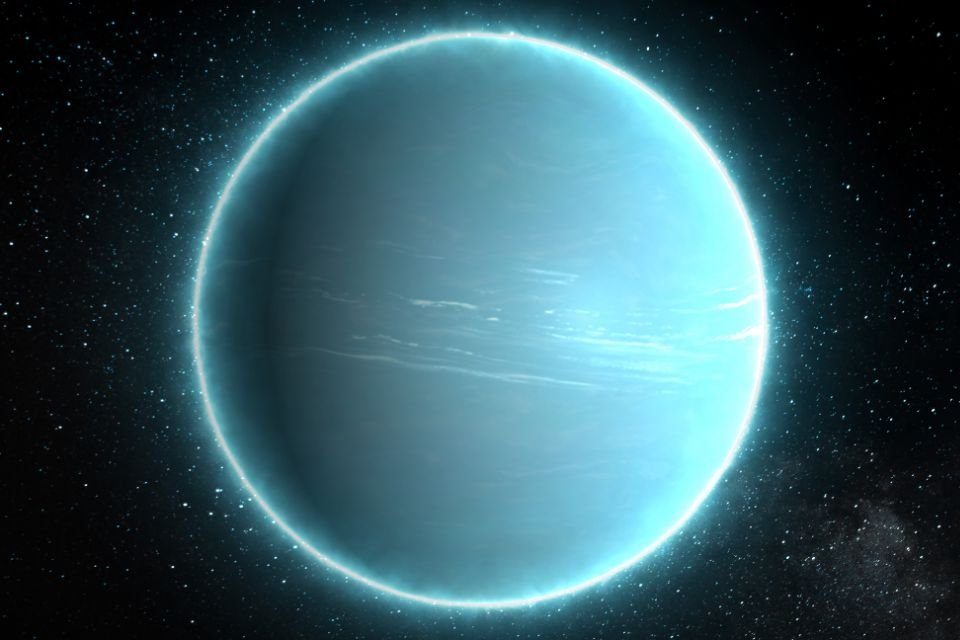In a study conducted by the United States National Aeronautics and Space Administration (NASA), scientists were able to observe an atmospheric event for the first time on Uranus, which is considered the third largest and fourth largest planet of the eight planets. In our Solar System. With data collected by radio telescopes from the Very Large Array Observatory (VLA), they observed a swirling cyclone at Uranus’ North Pole.
In the study, published in the scientific journal Geophysical Letters, researchers analyzed microwave data observed by the VLA in 2021 and 2022 and found evidence of the giant cyclone. In a released image, the atmospheric event is shown as a bright, compact spot at Uranus’ North Pole.
From the observations, the researchers also Captured information on temperature patterns, regional wind speeds, and trace gas changes – data suggesting a polar cyclone. According to the findings, the hotter and drier air circulating in the planet’s North Pole strengthens the claim that a cyclone exists.
Uranus’ position relative to Earth also made it easier to observe the North Pole. According to scientists, the planet is pointing one of its poles towards Earth, an event that has not occurred in recent years.
“These observations tell us a lot more about the history of Uranus. It’s a much more dynamic world than you might think. It’s not just a simple ball of blue gas. There’s a lot going on under the hood.” [do planeta]Alex Akins, lead author of the study and scientist at NASA’s Jet Propulsion Laboratory, said.
Uranus was the only planet in the Solar System where no cyclones were detected.
Until then, Uranus was the only planet in our solar system where scientists had not detected a polar cyclone. Now, They have already identified cyclones and anticyclones with some type of atmosphere on all planets in the solar system. – Including, astronomers predict that they will observe more changes in the atmosphere of Uranus.
When the Voyager 2 spacecraft passed by Uranus in 1986, scientists detected high wind speeds with characteristics swirling around the planet’s South Pole. However, at that time the probe was too far from the North Pole and was unable to make any further observations.
“New radio telescope observations of Uranus show several interesting features, including a compact feature in the center of the North Pole that appears hotter than its surroundings. This feature likely indicates the presence of a polar cyclone and shows similarities to polar features observed on other giant planets in the solar system. “
Source: Tec Mundo
I’m Blaine Morgan, an experienced journalist and writer with over 8 years of experience in the tech industry. My expertise lies in writing about technology news and trends, covering everything from cutting-edge gadgets to emerging software developments. I’ve written for several leading publications including Gadget Onus where I am an author.













